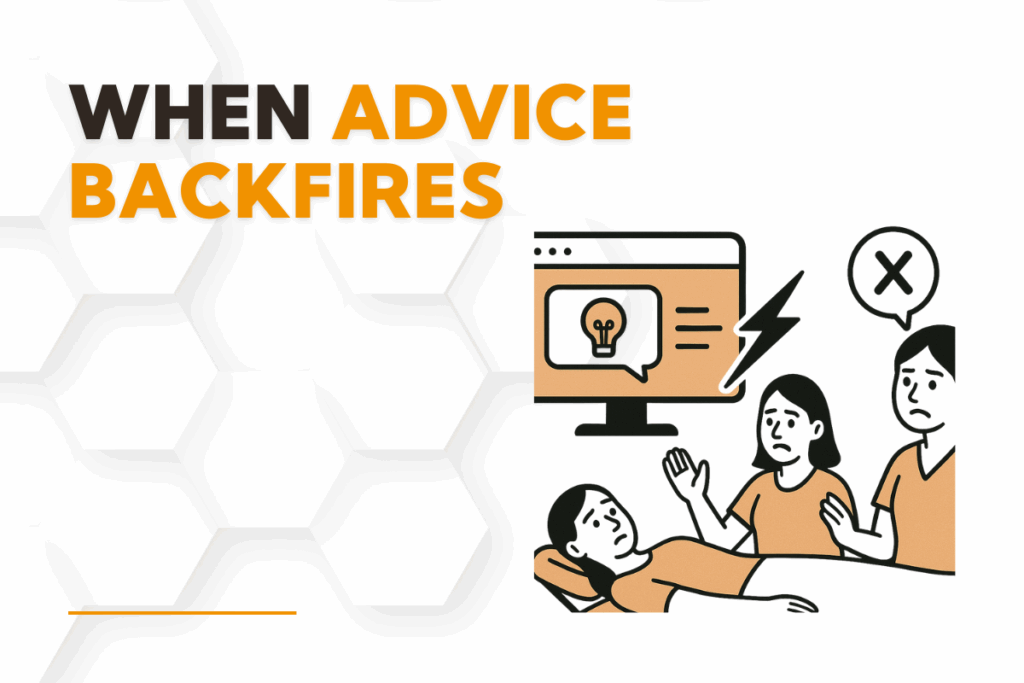Clients quoting website advice you didn’t approve is more common than you might think, and it can quietly damage the trust you’ve worked hard to build. Here’s how to fix it without alienating your clients.
When Website Content Leads to Confusion
How a Misquoted Blog Can Derail a Session
A client comes in and says, “Your website says deep tissue is best for sciatica, so I booked four sessions.” But you know that approach isn’t suitable without a full assessment. In that moment, you’re not just correcting the treatment plan—you’re untangling misinformation tied directly to your clinic’s name.
What Happens When Advice Doesn’t Match Your Practice
Clients quoting website advice that isn’t aligned with your methods can lead to mixed messages, confusion, and hesitation during sessions. Therapists may feel conflicted, unsure whether to correct the client or uphold what’s been published. Either way, the session suffers—and so does client trust.
Why Clients Quoting Website Advice Happens
Unreviewed Content Creates Mixed Messages
Often, the content on clinic websites comes from previous team members, old blog posts, or outsourced SEO writers. These pieces might include outdated treatment suggestions, broad generalizations, or one-size-fits-all advice. Once published, clients treat it as credible and current—even when it no longer reflects your practice.
The Disconnect Between Online Content and Real Treatment Plans
When content goes unreviewed, clients may follow it as if it were personal advice. That leads to misaligned expectations and pressure on therapists to justify or contradict information that should never have been online in the first place.
How Mismatched Content Impacts Clients and Therapists
Disruption and Doubt During Appointments
Clients quoting website advice can create a subtle, yet disruptive dynamic in the treatment room. Instead of focusing on assessment and care, the therapist now needs to gently correct the record. This pulls focus away from the session and can make the client feel misunderstood or defensive.
Uncertainty Across the Team
When clinic staff see content published without clarity or oversight, it creates internal uncertainty. Therapists aren’t sure what messaging is approved, while front desk staff are left navigating conversations that don’t align with your clinical approach.

Aligning Your Website Content with Your Clinic’s Voice
Use Your Language and Treatment Philosophy
To reduce confusion from clients quoting website advice, the first step is to align your content with your clinic’s language and philosophy. Generalizations like “Massage is great for everyone” or “You should book weekly for chronic pain” create unrealistic expectations. Instead, speak to what your clinic actually recommends—individual assessment, personalized plans, and client-centered care.
Add Disclaimers That Guide, Not Mislead
It’s helpful to include brief notes in educational content, such as “Treatment recommendations vary and should be guided by a licensed therapist after assessment.” This keeps your authority intact while still offering helpful information online.
Use Long-Tail Keywords That Match How You Speak
Clients often search using natural phrases like “massage for lower back pain relief” or “registered massage therapist for sciatica.” Use those same phrases in your content to improve SEO while keeping your language human and aligned with your values.
How to Audit and Clean Up Your Content
Start by Listing All Public-Facing Content
Create a simple document with every page, blog post, download, and FAQ currently live on your site. This gives you a clear view of what clients might be reading and quoting.
Categorize Content by Relevance and Risk
Mark which content addresses specific treatment topics, frequency suggestions, or health conditions. These are higher risk for misinterpretation and should be reviewed first.
Flag and Edit Misaligned Advice
Look for statements that sound prescriptive or out of step with your clinic’s actual recommendations. If needed, rewrite or archive the content entirely.
Add Context or Archive With Transparency
If you choose not to remove a post, clearly label it with a note like “Archived – Last Reviewed July 2025.” This tells readers the content may no longer reflect current guidance.
Keep Your Team Informed of All Changes
Once you’ve updated your site, let your staff know what changed and why. Share a simple summary so everyone is on the same page when speaking with clients.
How to Respond When Clients Quote the Wrong Advice
Redirect the Conversation With Empathy
When clients quoting website advice bring up misaligned information in session, your therapists need practical, non-confrontational ways to reframe the conversation. Phrases like “That’s a helpful overview, but for your body and goals, I’d recommend something more tailored” help you stay collaborative without letting inaccurate content guide care.
Reinforce the Value of Personalized Treatment
Validate the client’s effort to self-educate, but bring the focus back to your clinical expertise. Remind them that your advice is always based on their unique needs, not generalized blog articles.

Preventing Future Content Mismatches
Review Your Content Regularly
Set a recurring review schedule—at least twice a year—to keep content current and aligned with your clinic’s practice. Assign responsibility to one person or include it in your quarterly staff check-ins.
Involve Therapists in Content Planning
Your team hears real client questions every day. Use that input to shape your content strategy so what you publish matches the language and priorities clients actually respond to.
Label and Archive Older Content With Clarity
Mark outdated posts clearly, so clients understand when content no longer reflects your clinic’s current practices.
Add Transparency to Every Page
Use disclaimers that reinforce individual assessment. Let readers know your content is educational, not prescriptive.
Engage Clients Who Ask Questions
Invite clients to reach out if something they read doesn’t align with what they’ve experienced. This turns confusion into conversation and strengthens trust.
Strengthen Trust By Owning Your Voice
Clients quoting website advice is a challenge that quietly undermines trust—but it’s also fixable. A content review process, intentional updates, and empathetic communication can restore clarity and confidence across your entire clinic.
By aligning your public messaging with your actual care approach, your team works more confidently, your sessions flow more smoothly, and your clients feel fully supported.
Want to go deeper? Tools like electronic charting SOAP notes and business automation for massage clinics help create consistency between what clients see, what your team delivers, and how you grow your clinic with confidence.
FAQs
Often, older content or outsourced articles are still live on your site. Without regular review, these can give clients the wrong impression of your current practices.
You can edit for clarity, add disclaimers, or archive the content. Make sure to label archived posts so clients understand they may be outdated.
Give your team soft language like “That’s general guidance, but I’d recommend something based on how you’re presenting today.” This affirms the client without endorsing misinformation.
Assign someone to review content twice a year, create an internal content tracker, and involve your team in what gets published. Regular check-ins help everyone stay aligned.


